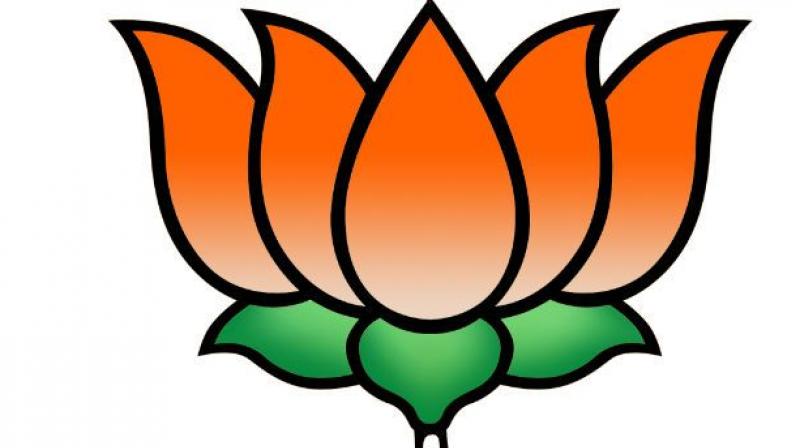UP polls: It's advantage BJP
The BJP is confident of getting support amongst its core supporters, the upper castes.

In the fast-changing political landscape of the most populous state, Uttar Pradesh, more so after the “mahasangram” within the ruling Samajwadi Party, the BJP seems to be making electoral gain. While it may not have done anything positive during the last few months, it seems to have moved ahead of other political contenders —the SP, BSP and the Congress. It is confident of getting a sizeable number of votes amongst its core supporters — the upper castes. What strengthens its position further as compared to the past is a strong possibility of a shift amongst the non-Yadav OBC voters towards the BJP. Here, Muslim voters — one out of every five voters in Uttar Pradesh is a Muslim (20 per cent of the total voters) — will be crucial. The strategic voting by Muslim voters in favour of the candidate most likely to defeat the BJP would ultimately result in split of Muslim votes since they will not be voting for the party but for the possible winning candidate irrespective of their party. This split in the Muslim vote will, by default, lend an advantage to the party.
The BJP seemed to have played a masterstroke in its effort to mobilise Muslim vote by raising the issue of triple talaq — a practice prevalent amongst Muslims. It is important to note that as per the All-India Muslim Personal Law Board, a Muslim can divorce his wife by saying talaq three times in a row. There have been cases when Muslim men have divorced their wives without any valid reason using this law. Sabiha Khan, Majidi Begum Farhana are many such women who have suffered at the hands of their husbands who divorced them without any reason. The list is endless. Muslim men in general may oppose the government’s move to bring about the uniform civil code, but studies indicate there are sizeable numbers of Muslim women who are opposed to the system of triple talaq. There are already Muslim women voicing their opinion in favour of this move of the government.
The AIMPLB has opposed the system of triple talaq vehemently. I am sure the BJP will leave no stone unturned to keep this issue alive till the elections so that it is able to mobilise some votes amongst Muslim women. And if this happens, this would certainly give the BJP a winning lead over other political contenders. At the moment, the BJP is yet to cover a lot of distance before bagging a clear majority in the state, yet the possible shift in the numerically strong Yadav voters could take it closer to the target.
Based on evidence from various studies conducted by the Centre for the Study of Developing Societies (Lokniti-CSDS) in Uttar Pradesh during various Vidhan Sabha and Lok Sabha elections, one can say without any doubt that Yadavs have always voted in favour of the SP in large numbers, election after elections. Roughly, two-third and three-fourth of Yadavs have voted for the SP in various states and national elections held between 2002 and 2012. However, this stable pattern was somewhat disrupted during the 2014 Lok Sabha elections when Yadavs shifted in sizeable numbers towards the BJP, thus bringing down SP’s support among them to about half.
But the recent studies do indicate the Yadavs returning to the SP fold. It is important to note that in recent times much of the popularity of the SP amongst Yadavs is due to its young leader and current chief minister Akhilesh Yadav. Any effort within the SP to undermine Mr Yadav may cost the SP votes from these crucial segment. And if this happens, the only party with which they will side will be the BJP. The 2014 Lok Sabha elections also witnessed a shift amongst the non-Yadav dalits towards the BJP giving it a massive victory. The evidence from the studies indicate that though dalits have been voting for the BSP in very large numbers, cracks seems to have emerged in the BSP dalit vote bank with this segment gradually looking for other political options.
It is important to note that the non-Yadav OBCs are in large numbers and in polarised polity can make a big difference. Surveys indicate, few months before elections, with 38 per cent of the non-Yadav OBCs indicated voting for the BJP, 23 per cent voting for the BSP, 19 per cent for the SP and 15 per cent for others; it seems to have an edge amongst OBCs, but the party may try to polarise the non-Yadav OBCs much more in its favour to reach close to the victory. The BJP is confident of getting support amongst its core supporters, the upper castes. By announcing Sheila Dikshit, a brahmin, as its chief ministerial candidate, the Congress possibly won’t be able to mobilise the brahmin vote in its favour. But this core support for the party (upper castes) is far less than what is needed to win the elections in UP.
The BJP is hoping to mobilise the non-Yadav OBC votes and may be successful having given the party’s command to Keshav Prasad Maurya, a Koeri (OBC) by caste, and Swami Prasad Maurya (OBC) having defected to the BJP. The ruling SP which seemed to be a strong contender till few months ago seems to have lost the advantage after the political drama which unfolded within the party. SP’s initial move of forming an alliance with other parties — the Congress and Ajit Singh’s Rashtriya Lok Dal — also gave an indication that the SP is now on a shaky ground. It is not confident of posing a challenge to the BJP or the BSP if it goes alone. It needs an ally to mobilise additional support to win the election. The BSP is still trying to put its house in order while the Congress may not even play a role of a spoiler.

